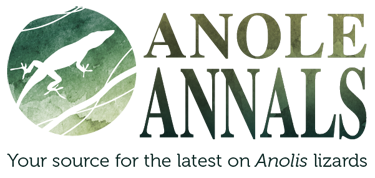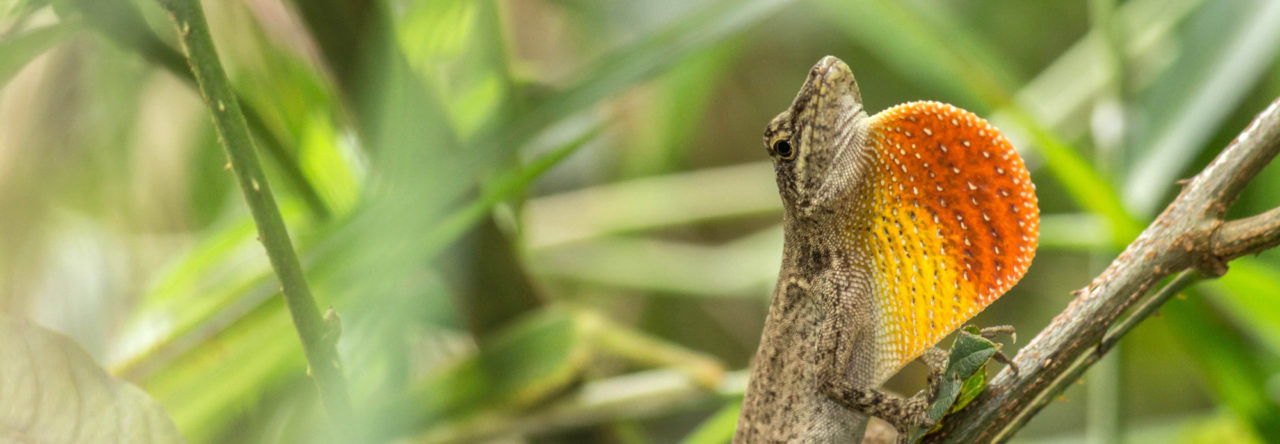At a Meeting of the Faculty of Arts and Sciences on May 19, 2009, the following Minute was placed upon the records.
Ernest Williams was a man of many contrasts. Biology at Harvard in the third quarter of the last century was full of outsized personalities—titans in the field with strong opinions and no reservations about expressing them. In such company, Williams appeared a wallflower, seemingly wishing to be anywhere but in the midst of their arguments. Yet, one-on-one, Williams had an incisive wit and a dry sarcasm—discussions with him were always stimulating and provocative as he never missed a chance to challenge one’s thinking, sometimes quite pointedly.
To some, Williams’s work came across as old-fashioned. His subject, systematics — the study of the evolutionary relationships of species—is among the oldest in science, and his papers — florid and opinionated and, above all, long—recalled an approach to scholarship no longer in vogue. Yet much of his work was boldly innovative; some papers are still widely cited, and in several cases his work was well ahead of its time, presaging approaches to the study of evolutionary biology that were not to catch on for several decades.
Ernest Edward Williams was born January 7, 1914, in Easton, Pennsylvania, the only child of middle-aged parents. Like many boys, particularly of that time, he grew up loving nature and spent many hours capturing salamanders and other creatures. After attending Lafayette College, Williams joined the Army, serving in Europe during World War II. Upon his return, Williams entered graduate school at Columbia University, where he was the last graduate student of the great anatomist William King Gregory.
Williams’s doctoral thesis focused on the structure of the neck vertebrae of turtles and how variation among species reflects their evolutionary heritage. The work demonstrated the combination of careful attention to detail with the ability to interpret results in the broader context that was to characterize Williams’s career. More than fifty years later the work is still foundational in understanding the evolution of turtle diversity.
In 1950, after completing his degree, Williams moved to Harvard, where he initially served as a laboratory coordinator for the anatomy course of the legendary paleontologist Alfred Sherwood Romer, then subsequently was appointed as an assistant professor and made coordinator of a General Education course on evolution. The Museum of Comparative Zoology’s Curator of Herpetology, Arthur Loveridge, retired in 1957, and Williams was appointed to take his place. In 1970 Williams rose to the rank of professor and in 1972 became Alexander Agassiz Professor of Zoology.
Williams initially focused on continuing his work on turtle systematics, leading to a series of publications including a still-important treatise published with Loveridge in 1957. Williams soon realized, however, that the museum’s collections were inadequate for the detailed analysis he conceived, which required large samples from many populations. This recognition that the museum’s herpetological collections were wide in scope, but lacking in depth, led Williams in two directions. First, it compelled him to work greatly to expand the Herpetology Department’s holdings, ultimately leading to a quadrupling of the department’s collections (to more than 300,000 specimens) by the time he retired as curator in 1980, making the Museum of Comparative Zoology (MCZ) one of the greatest herpetological repositories in the world. Second, it led Williams’s attention to focus on lizards in the genus Anolis, a very species-rich group from the Caribbean and Central and South America. A previous curator of herpetology and director of the MCZ, Thomas Barbour, had extensively collected anoles in the Caribbean; Williams, whose focus was much more evolutionarily-oriented than most systematists of the day, recognized that this group could be a model for studying large-scale evolutionary and biogeographical phenomena.
And, indeed, they were, and still are. Williams recognized that anoles have diversified for the most part independently on each of the major islands of the Caribbean (Cuba, Hispaniola, Jamaica, and Puerto Rico); most remarkably, the end-result of these evolutionary radiations has been very similar, with the same set of habitat specialists — which Williams labeled “ecomorphs,” a term now widely employed in evolutionary biology — evolving independently on each island. Such convergence of entire faunas is a rare phenomenon and Anolis has become a textbook example.
Williams’s work on anole evolution synthesized a wide variety of fields, including biogeography, functional morphology, population genetics, behavior, and ecology. Yet, Williams was a systematist by training, with little background in most of these areas. The primary means by which Williams orchestrated this broad-based investigation of anole diversity was his ability to identify the best organismally minded graduate students in Harvard’s biology department, regardless of their specific interests. As a result, the list of Williams’s graduate students reads like a Who’s Who in ecology and evolutionary biology.
At a time when the MCZ’s curators had little say in curricular matters, Williams pioneered a highly popular course on vertebrate biology. This course, which Williams taught for many years, helped keep organismal biology alive at Harvard and was a crucial step in the creation of the Department of Organismic and Evolutionary Biology (OEB).
Williams was not the most gentle-hearted of advisors. Gruff and very critical, he had high standards, expected students and colleagues to meet them, and was not shy about letting them know when they had not. Words of praise were not handed out liberally, but were cherished when received. With undergraduates, however, Williams showed a different side, being supportive and encouraging when needed and available at any time for discussion and advice. A number of Harvard undergraduates who worked with him have gone on to become evolutionary biologists, and several have continued to work on anoles, in many cases following up on ideas he initially conceived.
Williams remained active after his retirement from the Harvard faculty in 1984, continuing his evolutionary and systematic studies. Eventually, he moved back to his native Pennsylvania, where he died in 1998, taking his encyclopedic font of knowledge with him. Nonetheless, his spirit and ideas live on in the form of his many academic descendants, which include many prominent active scientists, several members of the U.S. National Academy of Sciences, a high-ranking U.S. government official, and the current curator of herpetology of the MCZ.
Respectfully submitted,
A. W. Crompton
Karel F. Liem
Jonathan Losos, Chair
 Animals have to perform a lot of complex tasks within their environment in order to reproduce and survive. To perform these tasks, animals often rely on their ability to move throughout their environment, and animals that do this often are often better fit within their environment. That’s why exercise is so important, ladies and gentlemen! Frequent exercise will increase your ability to run fast or run far, but it often comes at a cost. For one, increased exercise response is met with a reduction in your ability to fight an infection (i.e. immunocompetence) or reproduce.
Animals have to perform a lot of complex tasks within their environment in order to reproduce and survive. To perform these tasks, animals often rely on their ability to move throughout their environment, and animals that do this often are often better fit within their environment. That’s why exercise is so important, ladies and gentlemen! Frequent exercise will increase your ability to run fast or run far, but it often comes at a cost. For one, increased exercise response is met with a reduction in your ability to fight an infection (i.e. immunocompetence) or reproduce.












